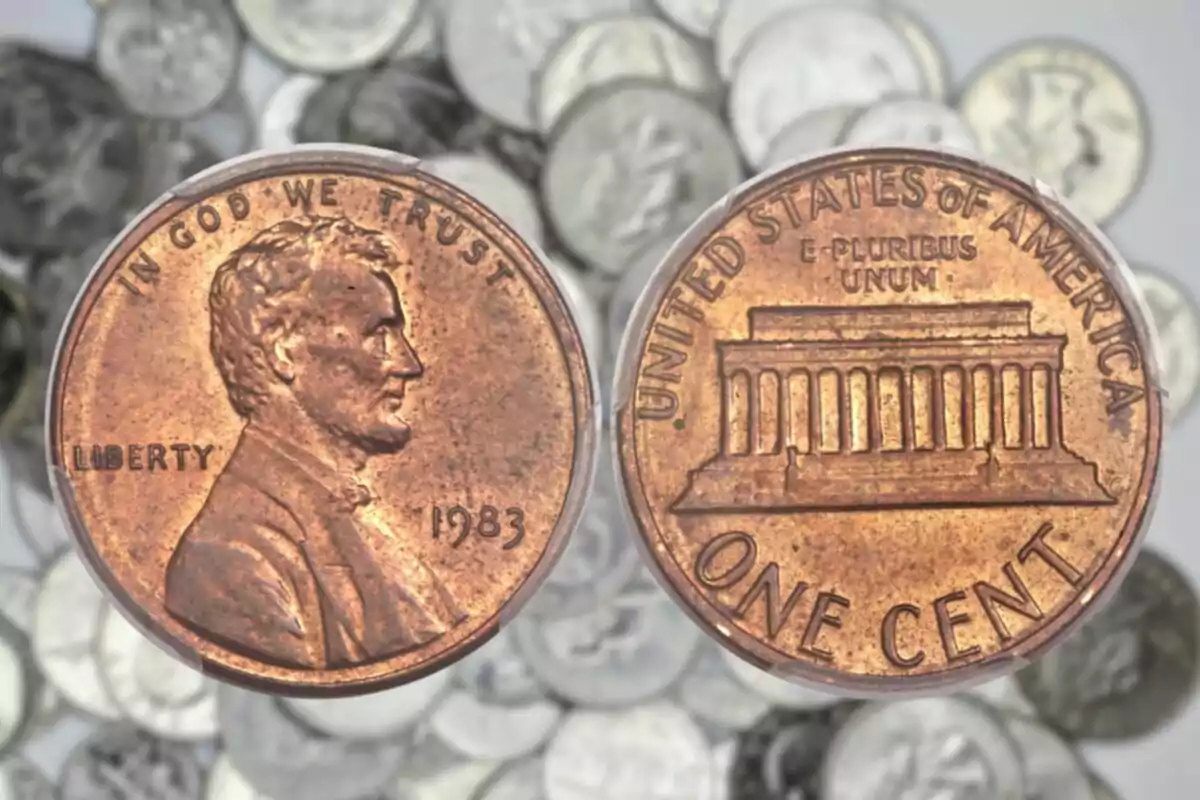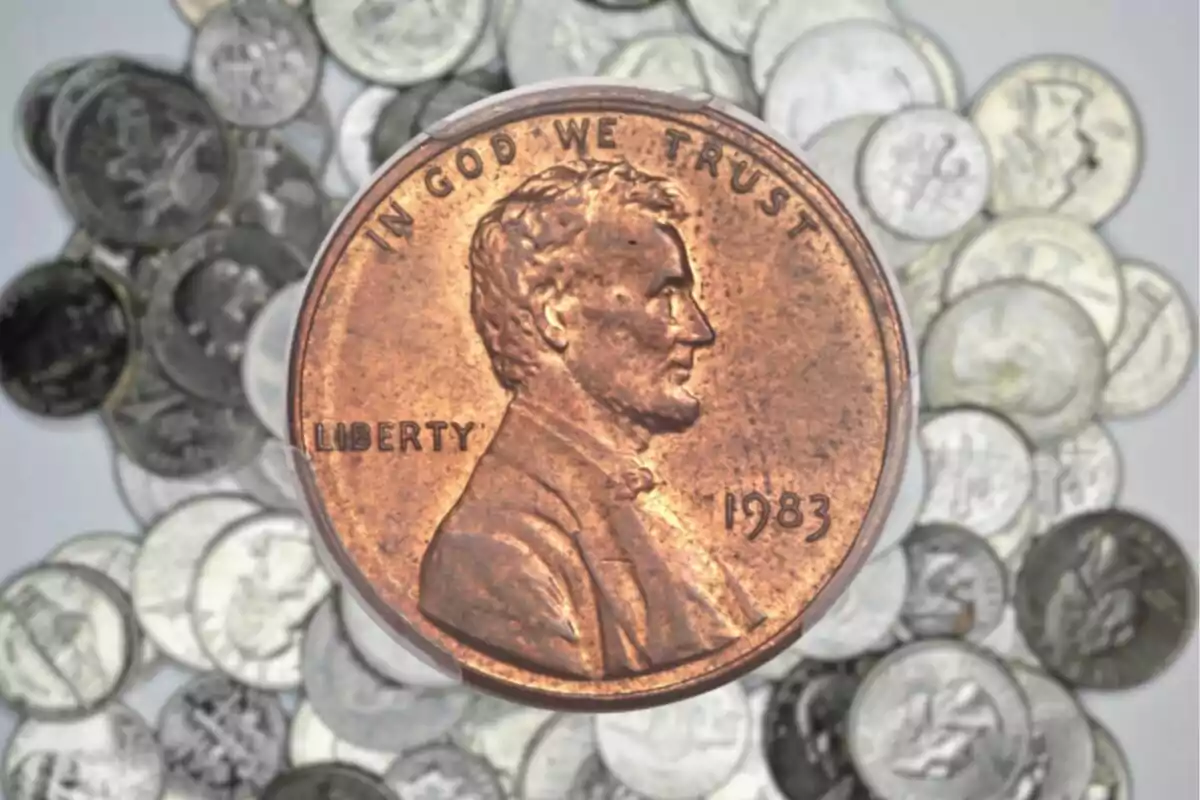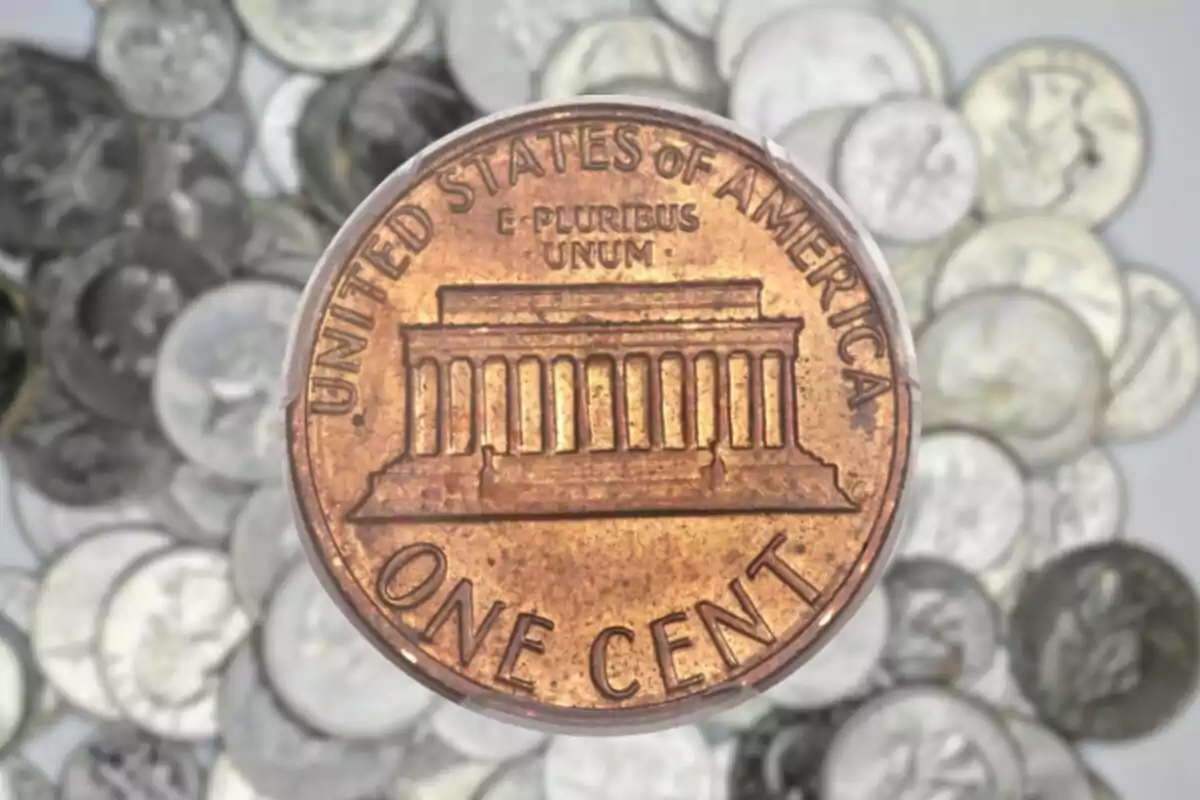
The 1-cent Lincoln Coin Worth Over $7,000: Still in Circulation
Collectors are willing to pay a large amount of dollars for a very particular coin
Numismatics is a fascinating field, especially when it comes to rare coins. Sometimes, a small imperfection can transform a common coin into a true gem. Among the 1983 pennies, there are a few specimens that could be incredibly valuable if you know how to identify them.
In general, the value of a coin depends on several factors, such as its year of manufacture, rarity, and condition. But there is something even more important that can affect the price of a 1983 penny: an error in its stamping. This small flaw has caused some of these coins to sell for thousands of dollars, making them quite a find.

The 1983 Penny Without Mint Mark: The First Step to Finding a Rarity
The first characteristic to consider is the lack of the mint mark. In 1983, coins manufactured in Philadelphia did not carry this mark, which normally indicates their place of origin. This is rare since most of the coins from that specific year come from Denver and San Francisco, which do include their mark (“D” and “S”).
However, the absence of the mint mark is not the only feature that increases the value of a 1983 penny. There are 1983 coins that exhibit an error in the stamping process, making them extremely rare and therefore valuable objects.

This flaw occurs when the stamping machine slightly strikes twice, leaving a double, 3D image on the bottom of the coin, where "one cent" is inscribed. This effect is called "doubled die reverse."
Is It Worth Looking for These Rare Pennies?
The good news is that pennies without mint marks and with the double-strike error can be worth thousands of dollars. It is estimated that out of the 7.7 billion pennies manufactured that year, only about 5,000 have this error. The rarity and manufacturing flaw make these pennies highly sought after among collectors, with some specimens reaching prices of up to $7,000.

On the other hand, if you find a 1983 penny without the mint mark but without the double stamping error, its value will vary depending on its condition. In good condition, it could be worth between $1 and $2, while a penny in worse condition will probably not exceed its face value of 1 cent.
In any case, if you are lucky enough to find one of these pennies, it is most advisable to consult a numismatics expert. So, you know, although a common penny may seem like a coin without value, manufacturing errors make them a highly desired find. If you find one, you could be holding a small fortune in your hands.
More posts: